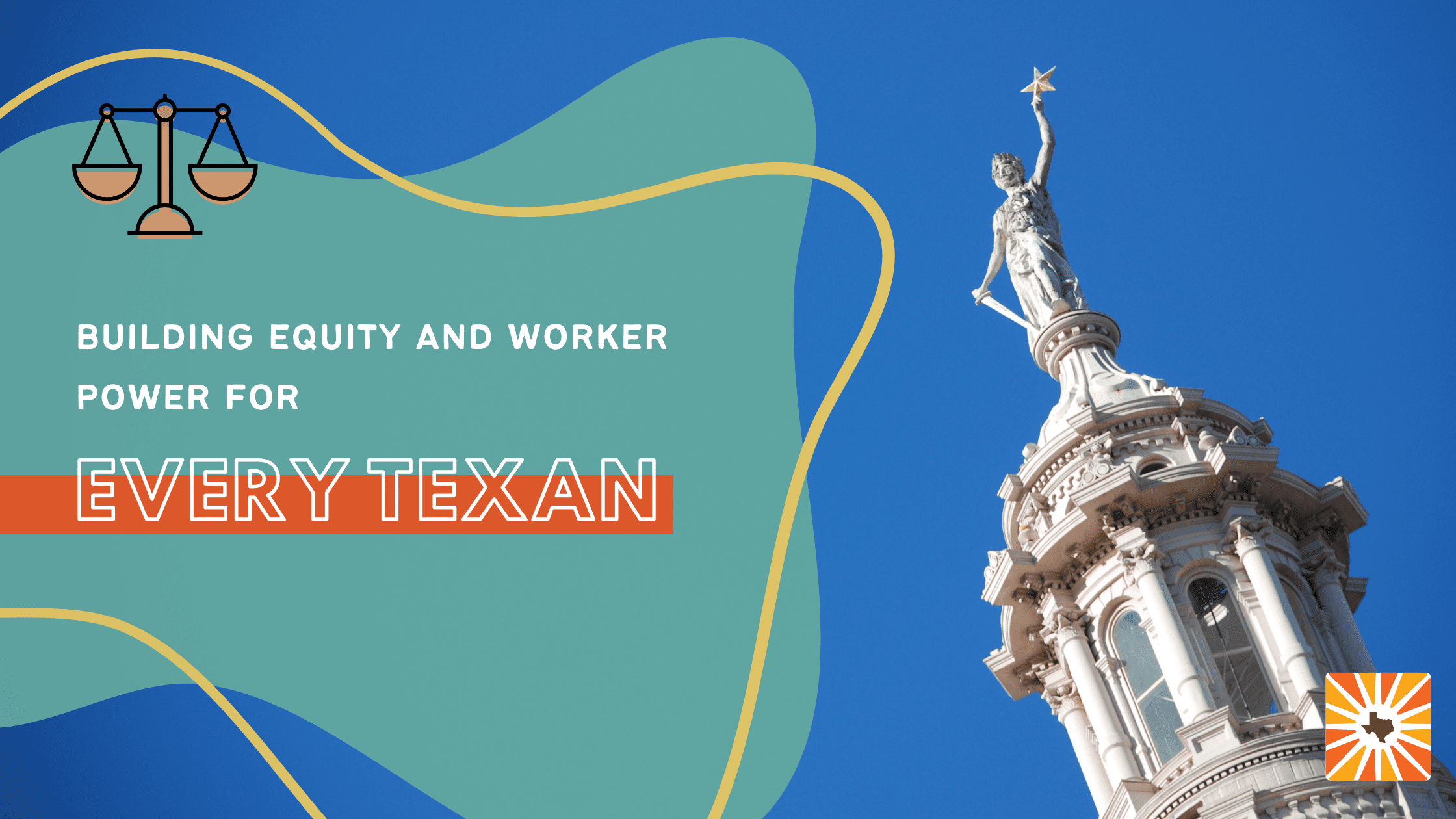Working families contribute greatly to Texas’ economy. The Unemployment Insurance (UI) program provides protection to all workers during economic downturns and unanticipated layoffs. The core value behind UI is that temporary job loss, by no fault of one’s own, should not lead to home foreclosure or hungry families. Finally, UI keeps workers experiencing layoffs connected to the workforce.
Unemployment Insurance (UI) Puts Laid Off Workers Back to Work
Despite common misperceptions, UI does not discourage individuals from returning to work. Research shows that additional weeks of UI have little or no effect on a worker’s job seeking activity or unemployment rates. States that adopted unemployment indexing to shorten maximum weekly benefits experience a higher number of individuals exhausting UI without having returned to work.
Today, Most Unemployed Texans Cannot Access Unemployment Insurance
2024 by the numbers:
- Texas’ average unemployment rate was 4.1%.
- On average, 632,000 Texans experienced unemployment of a total workforce of approximately 14 million. Approximately 23% of unemployed Texans received UI benefits. Texas ranked 28th in the United States for UI recipiency rate.
- Texas average UI benefit duration was 15.5 weeks.
Legislation Aiming to Cut the Standard Number of Weeks is Unnecessary
HB199 (Rep. DeAyala) proposes to tie or “index” Texans’ maximum number of UI benefits to the statewide average unemployment rate. What this means, in most scenarios, is that Texans experiencing job loss could lose 12 weeks of unemployment insurance coverage.
Currently, the standard maximum UI benefit is set at 26 weeks. HB 199 proposes to cut the maximum benefits to 14 weeks when the statewide average unemployment rate is 6.5% or below. When the state unemployment rate increases to 6.6%, but not greater than 7%, the maximum number of UI benefit payments increases to 15 weeks and so forth (see chart below). HB 199 only allows for the current standard of 26 weeks, plus 1 additional week, when the state unemployment rate is above 10%. HB 199’s proposed weekly-maximum benefit cut puts UI benefit levels below the average time unemployed Texans need to secure another job (15.5 weeks).
HB 199 Limits Recently Laid-Off Texans’ Time to Find A Similar Job
Below is a chart showing Texas’ statewide unemployment rate average from January 1995 through January 2025. For 82% of the months between 1995 and 2025, Texas’ unemployment rate fell below 6.5%.
If HB 199 had been in place, since 1995, most Texans would have lost 12 weeks of the 26 week maximum benefit.
UI Indexing Hurts Temporarily Unemployed Workers And Wastes Taxpayer Dollars
Some states have back tracked or curtailed their UI indexing bills because of the harm they cause to working families. The indexing model also does not account for regional and industry differences across the state. Legislators waste taxpayer dollars when they pass policies that will need to be corrected later.
- Kentucky: Kentucky’s state legislature passed an unemployment indexing legislation in 2022, reducing the maximum UI benefits. Republican lawmakers filed and passed a law to reverse course and increase the number of total benefit weeks allowed in 2023.
- West Virginia: West Virginia’s Legislature in 2024 failed to pass an unemployment indexing bill due to the disproportionate harm such a provision would cause to the state’s rural counties – where unemployment is higher than suburban and urban counties.
HB 199 Unfairly Targets Rural Communities
Texas’ rural counties consistently have higher average unemployment rates than suburban counties. The chart below shows the rural counties that had an unemployment rate above the state average in 2023.
HB 199 Is an Outdated, Misguided Policy Proposal; The Texas Unemployment Compensation Trust Fund Has a Balance.
During the Great Recession and the COVID-19 pandemic, proponents of UI indexing argued that states experiencing deficits in their respective Unemployment Trust Funds could curtail spending through indexing.
As of February 2025, the Texas Workforce Commission (TWC) estimated an Unemployment Trust Fund balance of $1,052,000,00. TWC’s financial status report shows that the Texas’ Unemployment Trust Fund has carried a positive balance since 2022. The U.S. Department of Labor reports a fiscal year 2024 fourth quarter Texas Unemployment Trust Fund balance of $1,008,322,000. Texas’ Unemployment Trust Fund is not in jeopardy.

Vote No On HB 199. It’s Not For Texas.
Unemployment Insurance prevents unnecessary economic hardship for Texas’ working families. UI also supports the state economy to weather recession, particularly for small businesses which are heavily dependent on consumption based sales. UI also guarantees workers the opportunity to find a job suitable to their skills and abilities, in turn improving future workforce retention.
HB 199 proposes to reduce the maximum number of benefit weeks allowed and sets up Texas to be less responsive during economic recession, ultimately costing businesses and taxpayers. The reasons to pass HB 199 are misguided and irrelevant to Texas’ economy. Furthermore, the bill as proposed will put many of Texas’ rural communities at a disadvantage.
